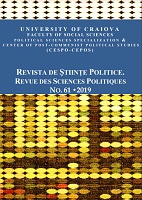Post-Soviet Era and Postmodern Image Production
Post-Soviet Era and Postmodern Image Production
Author(s): Simber AtaySubject(s): Photography, Visual Arts, Political history, Recent History (1900 till today), History of Art
Published by: Editura Universitaria Craiova
Keywords: new; ostranenie; lomography; new romanticism; total realism;
Summary/Abstract: The Russian avant-garde is one of the most effective movements of Art History as theory and practice. Consequently, the concept of Ostranenie, which was found and developed by Viktor Skhlovski and Russian Formalism have been remained original in postmodernism as well as in modernism. Moreover, New Media reflects the characteristics of Russian avant-garde due to new digital hardware and software technology and the new aesthetic potential of this technology. This update of ‘avantgarde new’ has been carried out by Lev Manovich. After the collapse of the Soviet Union, the Lomo camera, a product of the Russian optical industry, became a symbol of attraction and nostalgia. As a result of Austro-Russian cooperation, Lomography today has become an international analogue photography brand and a photographic genre. Post-Soviet social chaos is an inspiration source for art photographers, documentary photographers and photojournalists. In this context, Case History of Boris Mikhailov(1999), Winterreise of Luc Delahaye (2000), City of Shadows of Alexey Titarenko (2001), The Last Riot of AES+F (2005-2007)and Space of the City of Georgy Pervov (2004) are remarkable samples of a New Romanticism. These photographers have contributed to the development of postmodern photographic language, as well as fulfilling the historical witness mission with a humanist approach.
Journal: Revista de Științe Politice. Revue des Sciences Politiques
- Issue Year: 2019
- Issue No: 61
- Page Range: 92-103
- Page Count: 12
- Language: English

